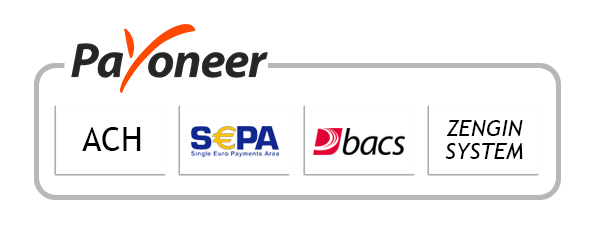Introduction
Techmarketreports reveals that, The global drone market has experienced robust growth, driven by advancements in technology and an expanding range of applications across various industries. In 2023, the market was valued at approximately USD 33.4 billion, and it is projected to grow at a compound annual growth rate (CAGR) of around 10.10% to reach about USD 87.5 billion by 2033. The market’s expansion is fueled by the increasing use of drones in sectors such as agriculture, construction, energy, and law enforcement, where they contribute to improved efficiency and reduced operational costs.
The drone market is experiencing significant growth due to the rising demand for these devices across various sectors. Industries such as filmmaking, agriculture, and delivery services are increasingly utilizing drones for their ability to perform tasks more efficiently and cost-effectively than traditional methods. This demand is driven by the drones’ versatility and the continuous improvements in their technology, which make them more accessible and practical for commercial, private, and recreational uses.
Additionally, drones are becoming increasingly popular for personal and commercial use. Their ability to capture high-quality aerial footage makes them valuable in real estate, entertainment, and sports industries, among others. The consumer market for drones is expanding as more people become interested in drone photography and videography, hobby flying, and racing, which further boosts their popularity.
The expansion of the drone market can also be attributed to the broader adoption of drones in new and emerging applications. For example, drones are being used for monitoring climate change, delivering medical supplies in remote areas, and enhancing security surveillance systems. As the potential uses of drones continue to evolve, the market is set to grow even further, exploring new horizons and integrating with other innovative technologies such as artificial intelligence and machine learning to enhance their capabilities.
Access a free sample copy or explore the report summary @ https://techmarketreports.com/report/drone-market/#requestForSample

Source @ market.us
Drone Industry Statistics
- The Drone Market is anticipated to witness substantial growth, with its market size expected to reach USD 87.5 billion by 2033, a significant increase from USD 34.4 billion in 2023. This growth reflects a Compound Annual Growth Rate (CAGR) of 10.10% over the forecast period from 2024 to 2033.
- In 2023, the Rotary Wing Drone segment held a dominant position, accounting for 62.3% of the overall market share. This segment’s strong performance can be attributed to its widespread application and versatility across various industries, including agriculture, inspection, and entertainment.
- The Military segment led the market in 2023, securing 48.8% of the total market share. The increased use of drones in defense and military operations underscores their growing importance in modern warfare, surveillance, and tactical missions.
- The Asia Pacific (APAC) region emerged as the market leader in 2023, capturing 40.2% of the global market. With revenues of USD 13.4 billion, APAC’s dominance is fueled by rapid technological advancements and the rising adoption of drones for commercial, industrial, and recreational purposes.
- The drone industry has experienced a significant surge in popularity, particularly evident in the 1.7 million registered drones in the United States. Globally, the drone market is on a strong growth trajectory and is projected to exceed $42 billion by 2025. Leading this expansion, China dominates drone production, accounting for an impressive 79.8% of the global market.
- Currently, the consumer drone segment holds the largest market share. However, substantial growth is anticipated in the agricultural sector, where drones are expected to comprise 60% of usage in the near future. This highlights a shift in drone applications beyond recreational purposes towards commercial and agricultural use cases.
- The drone services sector, valued at $4.4 billion, offers significant economic opportunities. A notable trend within logistics is the growing adoption of drones for delivery purposes, with over 30% of delivery businesses expected to integrate drone delivery systems by 2030. This trend reflects the strategic move toward more efficient, technology-driven distribution methods.
- Affordability within the drone market is increasing due to declining production costs. Entry-level drones for hobbyists are now available for under $100, making them more accessible to a wider audience. Meanwhile, high-end models equipped with advanced features continue to command prices above $1,000. This price range demonstrates the expanding consumer base and the diverse applications of drones across different market segments.
Market Segmentation
Type Analysis
In 2023, the Rotary Wing Drone segment emerged as the predominant force within the drone market, securing 62.3% of the total market share. This substantial portion reflects the segment’s broad acceptance and flexibility across diverse applications. Rotary wing drones, characterized by their rotor-based design similar to that of traditional helicopters, offer significant advantages in terms of vertical takeoff and landing capabilities. This ability is particularly beneficial in environments where space is limited or where precision is paramount. Furthermore, their stability and maneuverability in the air enhance their suitability for a wide range of tasks, from aerial photography and surveying to complex rescue operations.
Application Analysis
On the other hand, the Military segment represented the most substantial portion of the drone market in the same year, capturing 48.8% of the market share. This significant figure highlights the extensive integration of drone technology in defense and military strategies. Drones, offering high levels of operational efficiency and reduced risk to personnel, have become indispensable tools in modern military practices.
They are extensively used for surveillance, reconnaissance, and targeted operations, providing real-time data and imagery that are crucial for tactical decision-making. The adoption of drones in the military sector is driven by their ability to operate in various environments, their cost-effectiveness compared to manned aircraft, and their evolving capabilities, which include carrying payloads, performing long-duration missions, and integrating advanced sensors and communication systems. These aspects underscore the vital role that drones continue to play in shaping modern warfare and enhancing the security capabilities of nations.
Emerging Trends in the Drone Market
- Autonomous Aerial Ecosystems: The drone industry is moving towards the development of interconnected aerial ecosystems where drones collaborate, sharing data and coordinating tasks across various applications such as surveillance and environmental monitoring.
- Advanced AI and Machine Learning Integration: AI and ML are becoming central to drone operations, enhancing their decision-making capabilities and enabling them to perform complex tasks autonomously, from optimizing routes to improving obstacle avoidance.
- Enhanced Battery Technology: Innovations in battery technology are expected to extend drone flight times significantly, facilitating longer missions and expanding their use in industries like search and rescue, agriculture, and infrastructure inspection.
- Increased Use of Swarming Technology: Drone swarms are transitioning from experimental to commercial applications, providing cost-effective solutions for tasks such as agricultural management, construction monitoring, and entertainment.
- Regulatory Evolution: With the expanding capabilities and applications of drones, regulatory frameworks are adapting, likely leading to more standardized procedures for drone operations and simpler access to airspace.
Top 5 Use Cases of Drones
Drones are extensively utilized across various industries, each capitalizing on specific functionalities tailored to their operational needs. Key sectors include:
- Agriculture: Drones in agriculture are primarily used for mapping and surveying fields, which helps in detailed monitoring and analysis of crop health, irrigation needs, and pest management. This aids in precision farming practices that optimize resource use and increase crop yields.
- Construction and Urban Planning: In the construction industry, drones streamline site surveying and monitor project progress, enhancing efficiency and safety on construction sites. Urban planners employ drones for aerial mapping which assists in more effective planning and development of urban spaces.
- Energy: The energy sector utilizes drones for inspections and monitoring of extensive infrastructures such as pipelines and wind turbines, significantly enhancing operational efficiency and safety by reducing the need for manual inspections.
- Logistics: Drones revolutionize logistics by automating warehousing operations, including inventory tracking and material handling, and by facilitating last-mile delivery, thus reducing delivery times and operational costs.
- Healthcare: In healthcare, drones expedite the delivery of medical supplies, enabling rapid response in emergency situations and reducing contact in contagious environments.
Business Benefits of Drones
Drones offer a compelling array of business benefits across these applications:
- Cost Reduction: Drones decrease the costs associated with traditional methods of operations, such as manual surveys or inspections, by automating these processes.
- Time Efficiency: Operations that traditionally took longer times are significantly sped up with drones, enabling more tasks to be completed in less time, which is crucial for time-sensitive industries like logistics and emergency response.
- Enhanced Safety: By employing drones, businesses minimize the need for human presence in potentially hazardous areas, thus enhancing worker safety, particularly in industries like energy and construction.
- Improved Quality of Output: Drones often provide higher quality data and more precise outputs due to advanced sensors and imaging technologies, which can be crucial for detailed analytical tasks in fields like agriculture and urban planning.
Major Challenges in the Drone Market
- Airspace Management: As the number of drones increases, effectively managing airspace to prevent collisions and ensure safety becomes a critical challenge.
- Privacy Concerns: The widespread use of drones, especially in surveillance, raises significant privacy issues that need addressing through stringent regulations.
- Security Risks: The potential for drones to be used for malicious purposes poses security challenges, necessitating robust security measures to protect against such threats.
- Technical Limitations: Despite advancements, technical limitations in terms of payload capacity and flight duration continue to restrict the potential applications of drones.
- Economic Barriers: High costs associated with advanced drone technologies can be a barrier for widespread adoption, especially in less economically developed regions.
Top Opportunities in the Drone Market
- Expansion in Commercial Applications: Drones offer vast opportunities in commercial sectors such as delivery services, agriculture, and infrastructure inspection, where they can enhance efficiency and reduce costs.
- Environmental Monitoring: Drones equipped with environmental sensors present opportunities for detailed climate monitoring and conservation efforts, aiding in disaster response and wildlife protection).
- Healthcare and Emergency Services: Drones are increasingly used in healthcare for rapid delivery of medical supplies and in emergency responses to improve the efficiency and effectiveness of operations.
- Enhanced Connectivity with 5G: The integration of 5G technology promises improved connectivity for drones, enabling real-time data transmission and expanding their use in remote operations and real-time monitoring.
- Development of Green Drone Technologies: The focus on sustainability is driving the development of eco-friendly drones, which use renewable energy sources and are designed with energy efficiency in mind, opening new avenues in sectors focused on environmental sustainability.
Major Competitors in the Drone Market
The drone market is moderately fragmented with major players like DJI (China), Parrot (France), and Northrop Grumman (US) competing on technological advancements, payload capacity, and extended flight capabilities. These companies are continuously innovating to provide drones that are more efficient, capable of carrying larger payloads, and equipped with advanced navigation systems.
Top Key Players in the Drone Market
- DJI
- Draganfly Inc.
- EHang
- YUNEEC International
- Denel Dynamics (Denel SOC Ltd)
- Parrot Drones SAS
- Delair
- Aeronavics Ltd.
- AeroVironment, Inc.
- Autel Robotics
- Other Key Players
Future Outlook
The future of the drone market looks promising with an increasing trend towards automation and the integration of artificial intelligence technologies, which enhance the autonomous operational capabilities of drones. The market is expected to see significant growth in the consumer segment as drones become more accessible and user-friendly, and as regulations evolve to allow broader commercial applications.



